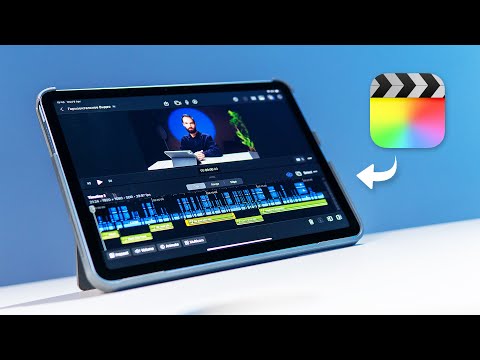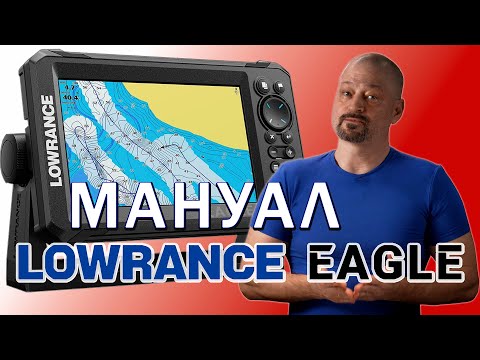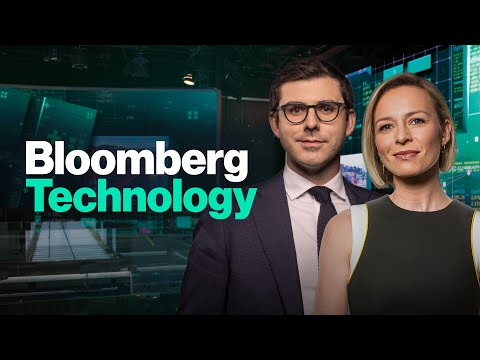Breaking Barriers: How Technology is Revolutionizing Art

Hello, hello, and welcome to another episode of The Geeky Boomer. I am PixelPia, your host, and today's topic is something that really interests me, and I hope that you will enjoy as well. You know, ever since humanity grasped its first tools, we have been on a quest, a quest to express ourselves, to create, and to leave a mark on the world, to say, I was here and I felt something. That quest led to the birth.
of art, a medium of expressions so powerful that it has transcended time and space. But what happens when the age old passion for art collides with the unstoppable force of modern technology? We are about to dive into a galaxy of creativity, so vast and so cutting edge, it would make even the Starship Enterprise look like a tricycle. We are exploring the intersection of art and technology.
We're going to unravel a rich tapestry that forms when pixels meet paintbrushes, when algorithms waltz with watercolor, and when virtual reality gives Rodin's the thinker a run for its money. The future of art and technology is here. And it's a panorama of limitless possibilities. This episode is going to be a masterpiece of its own, and don't forget to engage with me.
I want to hear your thoughts, your questions, and your ideas. Remember, this show is more for you than it is for me. So, if you are ready, let's take a look at our first topic. We're diving straight into the first topic, which is all about the beautiful collision between traditional art and digital art.
A topic that is as old as, well, the first version of Photoshop, perhaps. When you think of traditional art, what comes to mind? Is it the soft textures of Van Gogh's paintings? Where you can almost feel the wind blowing through the trees? Or perhaps it's the raw emotional power. of a marble sculpture like Michelangelo's. David, in contrast, let's take a look at digital art. Have you ever seen the digital landscapes created by artists using software like Adobe Photoshop or Procreate? They often blend the surreal and the realistic in ways that would be incredibly labor intensive, if not impossible, in traditional mediums.
For example, traditional artists like Bob Ross made painting landscapes a meditative practice. His happy little trees have a textural quality that's unique to oil paints. Now fast forward to Digital artists like , Loish, whose digital portraits capture a different kind of depth and emotion, using layers and digital brushes that can mimic everything from watercolor to pastels. In terms of accessibility, traditional art often demands physical space, a studio, ventilation, and of course, the messy but joyful experience of mixing paints.
Digital art, however, only needs a tablet and software, making it more accessible for those who need it, who might not have the luxury of a dedicated space. And let's not forget the undo button. While traditional artists might consider each stroke permanent, digital artists can experiment fearlessly, knowing That they can always hit CTRL plus Z to undo a mistake.
Or what they consider a mistake at the moment. So, is one better than the other? Well, that's like asking if a violin is better than an electric guitar. They're different instruments for different compositions. Each has its own challenges and opportunities. The real magic happens when artists find unique ways to blend the two.
But that's a topic for another episode. Before we move on, a quick question for all you listeners. Are you team traditional or team digital? Alright, let's switch gear for a moment and talk about something that sounds straight out of a sci fi novel. Imagine a world where computers can create art.
Wait, we are already living in that world. Welcome to Segment 2. Computer generated art. Algorithms, artificial intelligence, machine learning.
These are not just buzzwords anymore. They are artists in their own right. I mean, have you seen some of the surreal landscapes created by Google's Deep Dream? Or the poetic masterpieces by AI algorithms. When we talk about computer generated art, we're diving into a realm where algorithms. and creativity dance together. It is where the rigid logic of code meets the flowing unpredictability of artistic expression.
One example is the Deep Dream software by Google. DeepDream uses neural networks to find and enhance patterns in images, transforming ordinary pictures into fantastical landscapes filled with dreamlike imagery. It's like viewing reality through the lens of a psychedelic experiment. Another groundbreaking example is the AI project called Aaron by Harold Cohen. This software can create unique stylistic artworks that are strikingly evocative. It's amazing to think that lines of code can produce something so distinctly artistic, isn't it? We also have algorithmic generative art, such as fractal art, where mathematical formulas generate complex, infinitely detailed patterns.
Jonathan Wolff have taken fractal art to new heights, creating mind bending visuals that look like they belong in another dimension. But let's not forget that behind every computer generated art piece, there is usually a human who coded the algorithm, chose the colors. or set the parameters. While the machine executes the vision, the human provides the soul. Deep Dream by Google, which uses neural networks to find and enhance patterns in images, was an early glimpse into the potential of machine learning in art.
However, the field has since evolved with more advanced AI systems actually generating art from scratch. Take, for instance, the portrait of Edmond de Bellamy, an artwork created by the AI system developed by Obvious, a Paris based art collective. The portrait was created using a machine learning algorithm trained on data set of historic portraits. This artwork fetched a whopping $432,500 at auction. And the fascinating part, it challenges our ideas of Authorship, Copyright, and Value in Art.
Then there is DALL-E by OpenAI, a neural network that can generate incredibly creative and sometimes downright surreal images based on textual descriptions. Imaging asking a machine to draw a two headed flamingo, wearing a top hat. And voila, you get an image that not only meets the criteria, but often surprises in its artistic flair. Whether it's algorithmic, generative, art like fractals, or AI systems like those behind the portrait of Edmund de Bellamy, the line between human created and machine created art is blurring.
And with that comes questions about originality, ownership, and even the definition of art itself. So what's your take? Is AI just another tool in the artistic toolbox? Or is it poised to become an artist in its own right? Regardless of where you stand, one thing is for sure. The confluence of art and technology is a frontier of endless possibilities and debates. So do these computer generated artworks challenge our traditional notions of authorship and creativity? Absolutely. And that's what makes this intersection of art and technology such a fascinating space to explore.
And let's move from computer generated art to augmented reality and virtual reality. This is where things get incredibly immersive. With AR, artists can add a digital layer to the physical world. One example.
is Snapchat's landmarkers features. Artists were able to transform famous landmarks, like the Eiffel Tower or the Flatiron Building in New York, into fantastical creatures, or interactive art pieces. All through the lens of a smartphone. On the other hand, VR offers a fully immersive experience. Imagine putting on a headset, and suddenly, you're walking through van Gogh's Starry Night. Each brush stroke towering over you, this was made possible by projects like The Night Café, an immersive VR tribute to Van Gogh.
And let's not forget museums hopping on the VR bandwagon. The British Museum, for instance, offers a VR experience that takes you back to the Bronze Age. You can virtually handle artifacts, hear the sounds of ancient life, and feel like you time traveled thousands of years into the past. And there is also the AR art exhibition like Mirages and Miracles. by Adrian M. and Claire B.
Where sculptures and drawings come to life when you view them through AR goggles. Suddenly, a sketch on the wall starts to move, or a sculpture in front of you sprouts digital foliage. It's like stepping into a living dream. So whether it's AR's, interactive doodle floating in real space, or VR's, captivity, outer-worldly realms, These technologies are not just platforms, they are mediums of artistic expression in their own right.
And who knows what the future holds. Maybe one day we'll be stepping into art in a way that's beyond virtual. More tangible, yet still digital. It's a tantalizing thought, isn't it? But back to reality, and let's talk about 3D printing. Sculptors, this one is for you. Remember those days when chipping away at a block of marble? Well, these days, a 3D printer can bring your artistic vision to life while you sip a latte.
With 3D printing, artists can visualize complex geometries and structures that were almost impossible to create manually. And it's not just about plastics or metals. Artists are using 3D printing to work with a wide array of materials, including ceramics, glass, and even organic materials. Imagine creating art that's not just intricate, but also functional. 3D printing is doing to sculpture what digital art did to painting.
Breaking the barriers and making the impossible possible. It's like a modern chisel and hammer but with laser like precision and limitless possibilities. But let's now talk a little bit about crowdsourcing and collaboration.
Now, the image of the lone artists, toiling away in a secluded studio. has its own romantic allure. But what if I told you that art is becoming more communal than ever, thanks to technology. We live in a world where a single tweet or a Reddit post can gather the collective creativity of hundreds if not thousands of people from all over the globe. So what happens when this crowdsourced energy is directed towards art? One example is Reddit's r/Place experiment.
Users had a blank canvas and could place a single pixel every few minutes. What started as a chaos, quickly turned into a living, evolving artwork. With contributions from thousands of Redditors.
Memes, national flags, and intricate patterns. All coexisted on a single canvas. This project started on April Fool's Day in 2017, but have been repeated on the same day, April Fool's, in 2022, and this year, 2023. So you can still participate and make your pixels.
Then there is the fascinating story of the Johnny Cash project. This was a unique crowd sourced music video, where fans were invited to illustrate individual frames for Johnny Cash's song Ain't No Grave. The result? A constantly evolving, deeply personal tribute to the Man in Black made by his fans.
And let's not overlook initiatives like Zooniverse, which while not traditionally artistic, has a sense of cosmic artistry to it. People worldwide collaborate to categorize galaxies, transcribe ancient texts, or identify new species, transforming raw data into something meaningful. It's as if thousands of tiny brushes are painting a bigger picture of our universe.
The key takeaway here is that technology is democratizing the art making process. It's no longer confined to individual artists or exclusive collectives. With a smartphone or a computer, anyone can contribute to collaborative work. And that's pretty amazing. So what do you think? Is the crowd a new sort of artist? An invisible collective leaving its mark.
on the digital canvas. It's a fascinating thought and a testament to the incredible possibilities at the intersection of art and technology. And now let's take a look at art and social media. If there is one thing all of us use daily, it is social media.
Platforms like Instagram, TikTok and Twitter or X have not only revolutionized communication, but have also had a profound impact on art and its disseminations. Instagram, for instance, has given birth to a new generation of artists. People like @pollynor and @mister_michelle have built significant followings with their distinctive art styles, sharing their illustrations and even giving followers a behind the scenes look at their creative processes.
Without Instagram, who knows how long it would have taken these artists for their work, to get such widespread recognition. TikTok, on the other hand, has amplified the world of performance and video art. Have you seen the mesmerizing sand art videos or fluid painting demonstrations? They're addictive to watch. Artists like @emilymackeyart have turned the platform into a stage, sharing bite sized art lessons and drawing thousands of viewers in the process. And we can't talk about art on social media without mentioning Twitter's art hashtags like #drawingWhileBlack or #VisibleWomen as a couple of examples, they have highlighted underrepresented artists.
giving them a platform to showcase their incredible talents and helping them gain exposure which they might not have received otherwise. Beyond individual artists, there are broader art communities on social media. Accounts like @TheArtidote on Facebook and Instagram Curate and share powerful art pieces paired with thought provoking quotes and stories, making art more accessible and relatable to the masses. The beauty of art on social media is the democratization of the art world.
Barriers have been lowered. Artists don't necessarily need gallery representation to get noticed, and a viral post can catapult an unknown artist. to global recognition overnight. But with all this digital sharing, questions arise about art authenticity, copyright concerns, and the fleeting , nature of online fame.
But that's a discussion for another day. For now, it's enough to marvel at the technology and social platforms, that have opened up endless avenues for artists worldwide. And finally, I want to say something about the mysterious, yet electrifying world of NFTs, or Non Fungible Tokens, in the art landscape. So, let's break it down. Imagine that you have a digital art piece, like a JPEG file.
Typically, anyone can copy and paste it. Right. , But what if you want to prove you own the original digital art? That's where NFTs come in.
They are like certificates of authenticity for digital items. Be it art collectibles, or even tweets, stored securely on the blockchain. Now, why is this a big deal? Well, for artists, it's a new way to monetize digital art. For collectors, it's a way to own a verified piece of digital history. Let's dig into some examples. Beeple, a digital artist, made headlines when his digital art piece Everydays: The First 5000 Days sold as an NFT for a mind boggling 69 million dollars at the Christie's auction.
Just let that sink in for a moment. 69 million dollars. Then there is CryptoPunks, one of the earliest examples of NFTs. These are 24x24 pixel art characters, generated algorithmically.
Some of them have sold for millions of dollars. Yes, you heard that right, millions of dollars for pixel art. Even musicians are getting into the NFT game. Artists like Grimes and Kings of Leon have released exclusive NFT albums combining music with digital art, making the whole package a collectible. Of course, the rise of NFTs has sparked debates around environmental concerns due to the energy consumption of blockchain technology. Not to mention the question about the actual value or longevity.
of owning digital assets. But like it or not, NFTs are shaping up to be more than just a trend. They're challenging our traditional perception of ownership, value, and originality in the digital world.
And let's take a quick look into the future of art and technology. The most immediate frontier is probably the integration of art and tech into your daily life. Smart homes could become interactive art installations. Imagine your wallpaper changing according to your mood. With digital art created on the fly by AI algorithms, attuned to your emotions.
It sounds like science fiction, but we are almost there. Then we have the concept of the Metaverse the a collective virtual shared space created by the convergence of virtually enhanced physical spaces and interactive digital spaces. In this domain, artists could build entire worlds. Interactive experiences and digital sculptures that could be visited and even altered by anyone. Talk about interactive art on steroids. Brain computer interfaces.
are another intriguing horizon. What if artists could paint directly from their thoughts, bypassing the physical act of painting altogether? Companies like Neuralink are making strides in this area, and the possibilities are truly mind bending It's clear that we're only scratching on the surface. Technology isn't just changing art.
It's expanding what art can be and who can be an artist. As we step into this brave new world, one thing is for sure. Our understanding of art will never be the same. And personally, I can't wait to see what we get next. And with that, I will wrap up today's episode. Thank you for joining me in this exploration of the fascinating world of art and technology.
And as always, I would love to hear your thoughts. You can either leave a comment below this video or you can utilize the my form I have on my website thegeekyboomer.com where you can share your thoughts about technology and art. Until next time, bye!
2023-09-12 14:11


